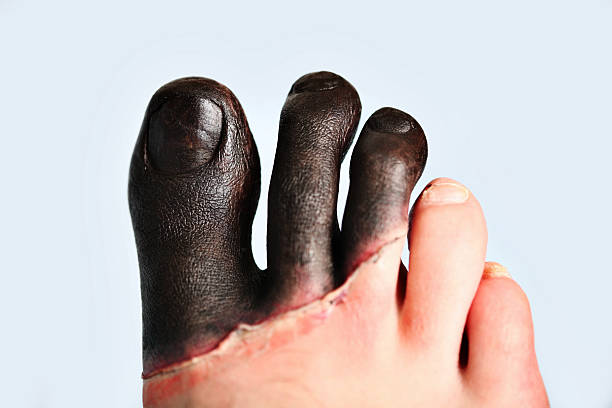Frostbite is a serious medical condition that occurs when skin and underlying tissues freeze due to exposure to extremely cold temperatures. It is most commonly seen in the fingers, toes, nose, and ears, but can affect any part of the body. Frostbite can lead to permanent tissue damage and, in severe cases, amputation, so it is important to know the symptoms and proper treatment.
Symptoms of Frostbite
The symptoms of frostbite can be divided into three stages: frostnip, superficial frostbite, and deep frostbite.
Frostnip: This is the mildest form of frostbite and occurs when the skin is exposed to cold temperatures but does not freeze. Symptoms include red, tingling skin, and numbness.
Superficial Frostbite: This occurs when the skin and the top layer of underlying tissue freeze. Symptoms include white or yellowish skin, hard or waxy skin, and blisters.
Deep Frostbite: This is the most severe form of frostbite and occurs when the deeper layers of tissue freeze. Symptoms include dark blue or purplish skin, numbness, and a lack of pulse in the affected area.
Treatment for Frostbite
Warm the affected area: If you suspect frostbite, it is important to warm the affected area as soon as possible. This can be done by soaking the area in warm (not hot) water, using a warm cloth, or placing the affected area under your arm or against your chest.
Do not use direct heat: Avoid using direct heat, such as a heating pad, to warm the affected area. This can cause further tissue damage.
Remove any wet clothing: Remove any wet clothing from the affected area to prevent further heat loss.
Pain relief: Over-the-counter pain relievers, such as ibuprofen or acetaminophen, can help relieve pain and reduce inflammation.
Seek medical attention: If you have frostbite, it is important to seek medical attention as soon as possible. A healthcare professional will be able to evaluate the extent of your injury and provide proper treatment, which may include wound care, antibiotics, and, in severe cases, surgery.
Prevention of Frostbite
The best way to prevent frostbite is to avoid prolonged exposure to cold temperatures. To do this, follow these tips:
Dress warmly: Wear warm, dry clothing in layers and make sure to cover all exposed skin, including your head, hands, and feet.
Keep moving: Exercise can help keep blood flowing and prevent frostbite.
Avoid alcohol and nicotine: Alcohol and nicotine constrict blood vessels, which can increase the risk of frostbite.
Stay dry: Wet clothing and equipment can increase the risk of frostbite, so make sure to stay dry and remove any wet clothing as soon as possible.
Know the signs: If you experience symptoms of frostbite, seek medical attention as soon as possible.
Conclusion
Frostbite is a serious medical condition that occurs when skin and underlying tissues freeze due to exposure to extremely cold temperatures. Symptoms of frostbite can range from mild (frostnip) to severe (deep frostbite) and can lead to permanent tissue damage and, in severe cases, amputation. To prevent frostbite, it is important to avoid prolonged exposure to cold temperatures and to know the signs and symptoms. If you suspect frostbite, seek medical attention as soon as possible.

 Home
Home Health
Health Diet & Nutrition
Diet & Nutrition Living Well
Living Well More
More












